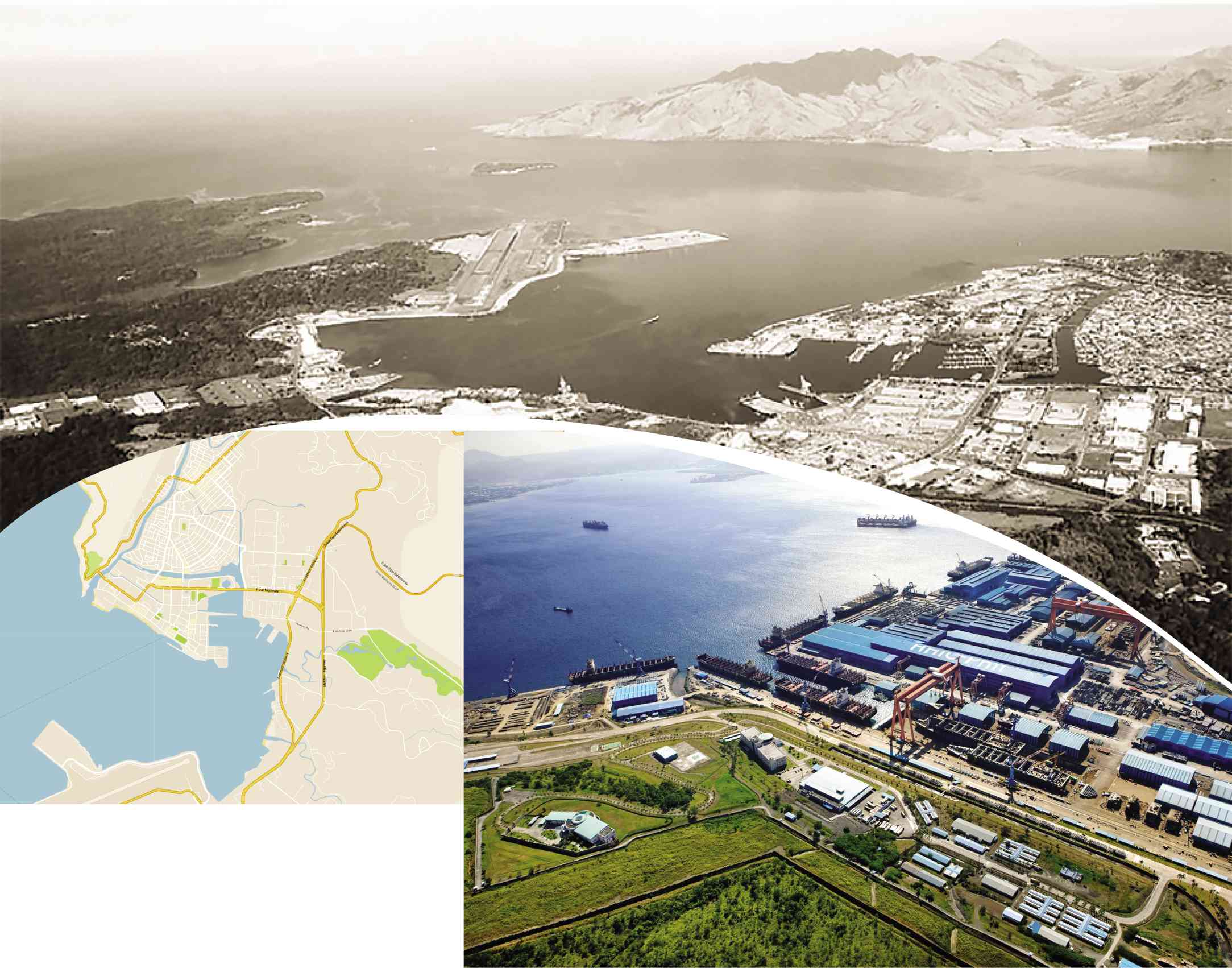All bases covered at the freeport zone
104,771
Population of the municipality of Subic, as of the 2015 Census
233,040
Population of Olongapo City, as of the 2015 Census
670
Article continues after this advertisementarea in square kilometers of Subic Bay Freeport operated by the Subic Bay Metropolitan Authority (SBMA)
Article continues after this advertisement1992
Year the Republic Act No. 7227, known as the Bases Conversion and Development Act, was passed
8 billion
worth in US dollars of the property and facilities left in Subic Bay by
the US naval forces. The SBMA then started the conversion of the military base into a free port like in Hong Kong and Singapore
3
amount in billion pesos, SBMA’s total revenue in 2017
1,546
companies doing business in Subic Bay Freeport as of February 2019
134,000
workers employed at the Subic Bay Freeport as of February 2019
It was one of the most successful models of military conversion in the world.
And since its transformation from a military base to a special economic zone and free port, the Subic Bay Freeport Zone in Zambales has been contributing significantly to the country’s economic development.
The Subic Bay Freeport Zone—located in Central Luzon and straddles along portions of Olongapo City and the town of Subic in the province of Zambales, as well as the towns of Hermosa and Morong in the province of Bataan—has always been historically and strategically important in Philippine history.
Historical significance
In 1607, the town of Subic was founded by the Augustinian Friar, Father Rodrigo de San Miguel. In 1884, King Alfonso II issued a Royal Decree officially declaring Subic Bay as a naval port and Subic became Spain’s stronghold in the Far East.
After the Spanish-American war, US naval forces took over Subic and its bay, whose deep harbor was regarded by Admiral George Dewey as having no equal among Philippine islands.
In 1901, the US Navy designated Subic Bay as a repair and supply naval base site. Then US President Theodore Roosevelt issued an executive order in 1903 designating 70,000 acres of land including Subic as an American military reservation because of its strategic importance. It was once the largest US military naval base in Asia and home to the US Seventh Fleet.
Japanese bombers and fighter planes attacked Subic Bay and Olongapo on December 14, 1941. Subic then served as a monitoring and defense facility during the Japanese occupation from 1942 to 1945. On January 29, 1945, some 40,000 troops landed in Zambales and had advanced through the Subic Bay to regain control of the base.
SBMA creation
On March 13, 1992, the Philippine Congress passed Republic Act No. 7227, known as the Bases Conversion and Development Act of 1992, in anticipation of the pullout of the US military bases in the country.
Section 13 of RA 7227 created the Subic Bay Metropolitan Authority (SBMA) to develop and manage the Freeport, which provides fiscal and non fiscal perks to locators in the special economic zone. Richard Gordon, then mayor of Olongapo, was the first SBMA chairman.
In August 2004, former President Gloria Macapagal-Arroyo issued Executive Order No. 340 that reorganized the SBMA Board of Directors and segregated powers, functions and duties of the chairman and those of the SBMA administrator.
Investment destination
Since then, Subic Bay has been a steady investment destination. Its location is especially strategic as the Subic Bay opens to the West Philippines Sea while the western part of its harbor faces the Zambales mountain range, making it naturally sheltered from typhoons.
At present, the 1,546 companies doing business in Subic are employing some 134,000 workers. Top industries are mainly maritime and port-related, manufacturing, tourism and leisure, and utilities.
Subic Bay is a mixed land use zone, consisting of residential, commercial and recreational areas. The richly diverse natural environment in Subic Bay is carefully cared for and protected.
But the potential of Subic Bay remains vast.
Earlier this year, lawmakers proposed a bill to expand the free port by adding 41,605 ha to the Subic Bay Freeport.
SBMA earlier disclosed that the initial allotted lands from local governments in Zambales province included 9,000 ha in San Antonio, 10,000 ha in San Marcelino, 600 ha in Subic, 500 ha in Castillejos and 900 ha in Olongapo City. At least 505 ha in Hermosa, Bataan are also being considered in the expansion. Previously, the 365-ha Philippine Refugee Processing Center Complex and the Morong Special Economic Zone were annexed to Subic freeport through Proclamation No. 984.
Given the sustained efforts of the government and the influx of investors and tourists, there’s no doubt that Subic Bay will only become even more attractive as an investment destination.
Sources: SBMA official website, www.mysubicbay.com.ph, subic.gov.ph, Inquirer Archives
